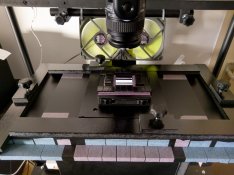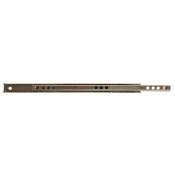In my opinion:
1. PS is time consuming.
2. Standard lenses don't have enough "flatness" of the image to attain good sharpness and the detail when photographing the negatives and macro lenses are, well, pricey.
I tried to "scan" a negative via digital camera and encountered a few downsides: first of all, I had to grab a macro lens. Then, I had to stop it down. A lot. Next step was achieving correct white balance in PS. Also, medium format shots still laked sharpness, no matter what I tried. If I scanned it piece by piece, it took even more time and that's where I dropped the whole thing and went straight to flatbed scanner. Silverfast made my life easier and now I have enough time to read a book while my negatives are batch-scanned.
I made two types of copy machines myself; film-to-film (35mm) and film-to-digital (35mm to APS-C DSLR). In practice it never works exactly as you imagined, so the best strategy is simply to build one and then gradually improve it as desired. I have no problems with sharpness whatever but there are many details in the construction that should be addressed and it is very easy to spoil the result.
About your remark about PS which is time consuming, well if you are using a commercial scanner you should save the file in the most neutral form possible without applying any settings from the scanner and then process it in a photo editor after that. So it makes no difference if you are using a scanner or a DSLR. In the latter case, with a DSLR, you are even scanning much faster and your workflow is exactly the same as if you were processing photos directly taken by camera; no need to spend time optimizing a scanner.
You absolutely need a good macro lens for copy work. They have an optimal aperture for maximum sharpness which must be tested separately. With too small f-numbers the lens is relatively soft and with too large f-numbers diffraction kicks in. I tested several of them and mostly aperture must be set to about f/8.
One thing often overlooked is stray light entering the path between lens and film causing flare and reducing contrast. So, you need to attach a bellows between lens and film holder, or mount a larger enclosure around it (blackened inside).
It is good practice too to switch off all lights in the environment (including daylight) and only use the light source behind the film. If light from the light source is mixed with other sources you can expect problems with white balance. I have a small LED panel for viewing negatives as a light source (Kaiser Slimlime LED) which is very evenly illuminated and it has a specified color temperature to which the white balance of the camera is set (even Auto white balance will do).
Making a serious stand-alone DSLR copy machine is not for the weak-hearted, and adding an X-Y feature for stacking is even more challenging. You will need countless hours for the design and the construction to optimize everything and one must have the skills, the tools, the parts, the materials, and a workplace to construct it, and in the end it will probably cost more than a commercial scanner. So, that is the main reason why so may people are buying a scanner, not because it is better but because it is easier.







